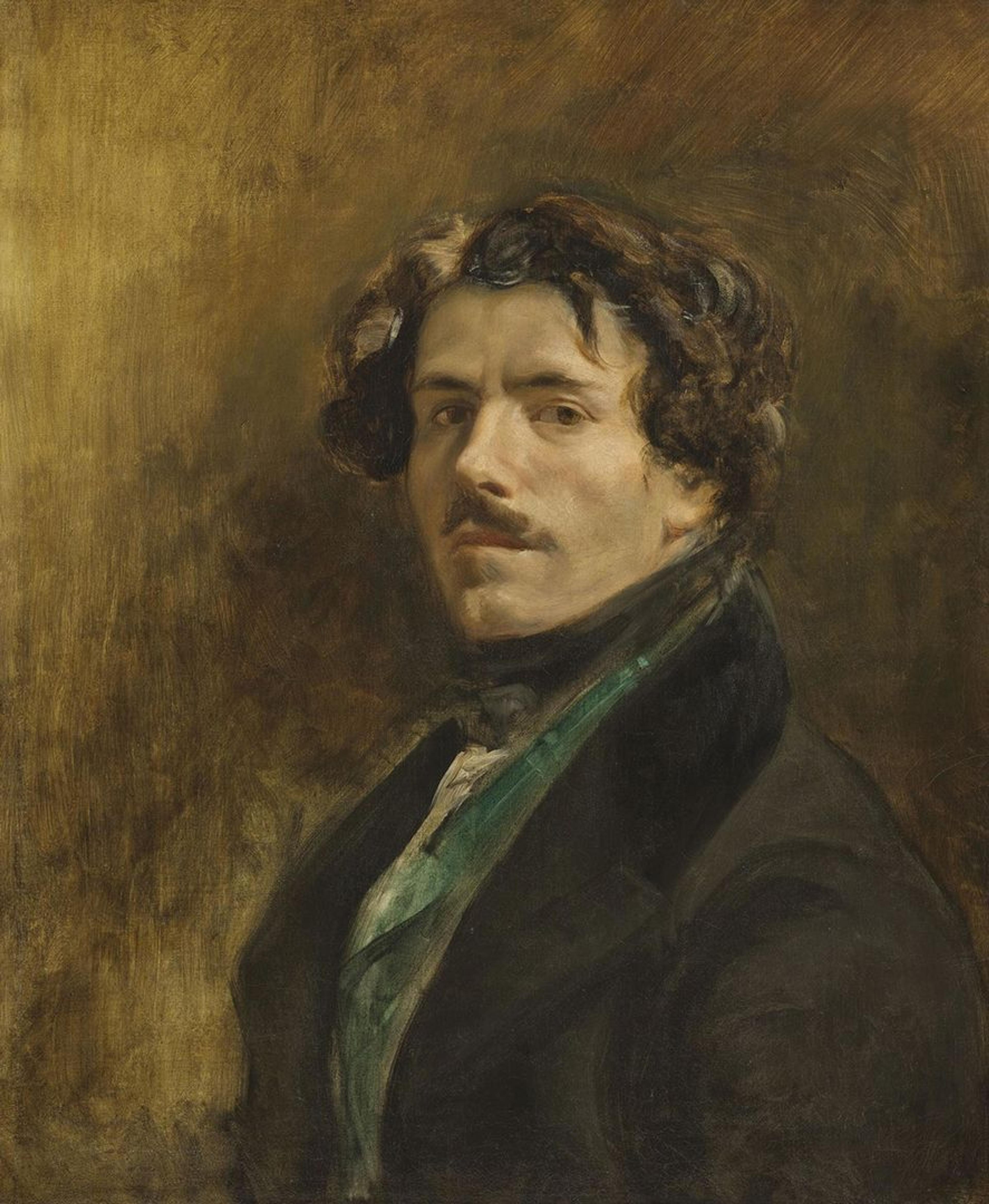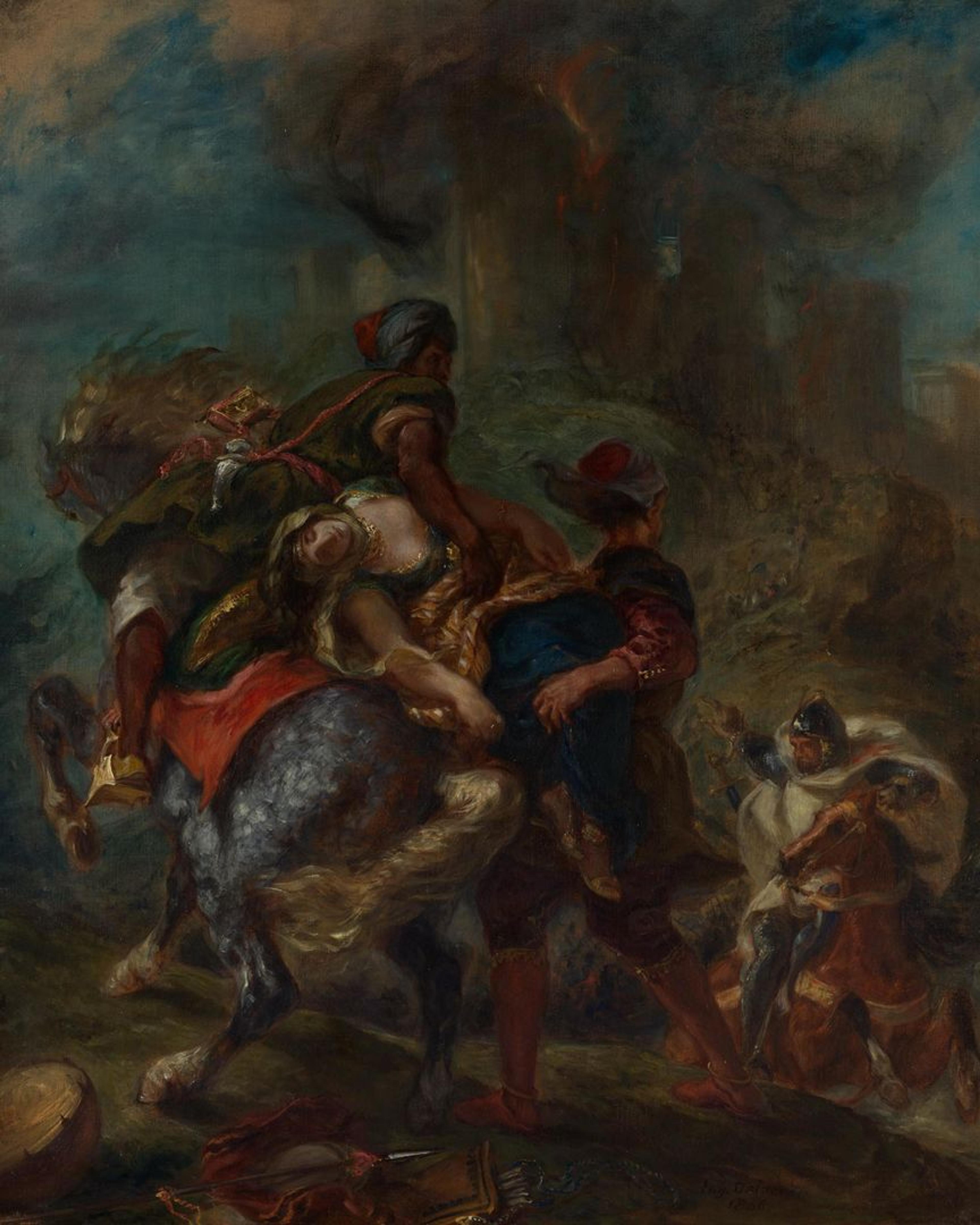
Eugène Delacroix (French, 1798–1863). Self-Portrait in a Green Vest, ca. 1837. Oil on canvas, 25 9/16 x 21 7/16 in. (65 x 54.5 cm). Musée du Louvre, Paris. © RMN–Grand Palais / Art Resource, NY / Michel Urtado
Whether encountering Eugène Delacroix for the first time or after long engagement with his life and work, visitors to the new exhibition Delacroix and readers of the accompanying catalogue will gain appreciation for one of the great creative imaginations of the nineteenth century. Museumgoers may be acquainted with Delacroix, but they can be forgiven for not feeling that they know him. His output is vast, diverse, and widely disseminated, and a definitive edition of his extensive writings has yet to appear in English. One place to begin is to look at the paintings—and drawings and prints—in person, as Van Gogh did when he wrote: "What I find so fine about Delacroix is precisely that he reveals the liveliness of things, and the expression and the movement, that he is utterly beyond the paint." The opportunity to discover Delacroix with fresh eyes is reason enough for the present exhibition.
Delacroix was unquestionably one of the most important figures in France, both within and outside the realm of the visual arts, to come of age in the wake of Napoleon. The inexhaustible richness of his production is presented in the exhibition in all its complexity, with an emphasis on layers of association across the three main phases of his long career, the diverse genres he mastered, and the materials in which he worked. Additionally, the catalogue's authors build on and pay tribute to fundamental studies by such exemplary scholars as Adolphe Moreau, Alfred Robaut, Maurice Sérullaz, and Lee Johnson, breathing new life into the legacy of an artist whose art and writings reveal limitless capacity for self-reflection.

Eugène Delacroix (French, 1798–1863). The Abduction of Rebecca, 1846. Oil on canvas, 39 1/2 x 32 1/4 in. (100.3 x 81.9 cm). The Metropolitan Museum of Art, New York, Catharine Lorillard Wolfe Collection, Wolfe Fund, 1903 (03.30)
This was the man about whom Théophile Silvestre wrote that his "character is violent and sulfurous, but his self-possession is total," and about whom Charles Baudelaire reflected, "Delacroix was passionately in love with passion, but coldly determined to express passion as clearly as possible." Delacroix commenced formal training in the Paris atelier of the Neoclassical painter Pierre Narcisse Guérin, where he encountered the magnetic Théodore Gericault. But his artistic pedigree reached back even further—to Guérin's own master, Jacques Louis David, dean of the French school during the prior twenty-five years of Revolution and Empire.
What distinguished Delacroix from the dozens of talented young artists who belonged to this storied circle was the strength of his ambition to conquer the public on his own terms: a deeply held conviction that his personal interests, creative impulses, and erudition were an appropriate foundation for art of enduring value. Hallmarks of his work, abundantly evident in the exhibition and catalogue, include novel subject matter, a theatrical sense of composition, a vibrant palette, and a vigorous painterly technique that prioritized the freshness of the initial sketch over traditional notions of finish.
A great deal of serious scholarship was inspired by now legendary monographic exhibitions held at the Louvre in 1930 and 1963. But it is also fair to say that Paul Jamot's assessment in the preface to the catalogue of the earlier show still applies, that Delacroix is an illustrious name and a great name, but he is not well understood. In other words, Delacroix is a major figure in the history of European painting who merits a close reappraisal. The present exhibition and catalogue provide a unique occasion to gain a deeper understanding of this defining figure of French painting. It is an opportunity to take the artist at his word, when he summed up the immediacy and urgency of his art: "Materially speaking, painting is nothing but a bridge set up between the mind of the artist and that of the beholder."
Note
This essay was adapted from the preface to Delacroix (The Metropolitan Museum of Art, 2018), a catalogue published in conjunction with the exhibition of the same name on view at The Met Fifth Avenue through January 6, 2019.
Related Content
Delacroix is on view at The Met Fifth Avenue through January 6, 2019.
View a selection of works presented in the exhibition.
The exhibition catalogue, by Sébastien Allard and Côme Fabre with contributions by Dominique de Font-Réaulx, Michèle Hannoosh, Mehdi Korchane, and Asher Miller, is available for purchase at The Met Store.
Another monographic exhibition of Delacroix's work, Devotion to Drawing: The Karen B. Cohen Collection of Eugène Delacroix, is on view at The Met Fifth Avenue through November 12, 2018.
